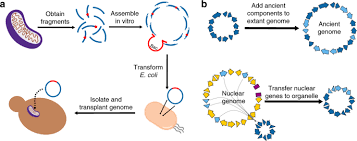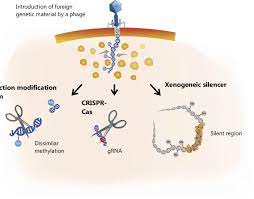Synthetic biology: Redesigning the components of life
In synthetic biology, parts, equipment, and systems are designed and constructed, and existing biological systems are redesigned to serve useful purposes. Globally, synthetic biology researchers and companies are using the power of nature to improve manufacturing, agriculture, and medicine.
The scope of synthetic biology
A common goal of synthetic biology research is to redesign organisms so that they can produce substances, such as drugs or fuels, or acquire new capabilities, such as sensing something in the environment. So far, synthetic biology has produced the following products:
Microbes can be used for bioremediation to eliminate pollutants in the environment.
Rice that produces β-carotene. β-carotene is one of the nutrients that help prevent vitamin A deficiency. It is usually found in carrots. Every year, 250,000-500,000 children are blinded by vitamin A deficiency, and children are at higher risk of infection and death.
As an alternative to real roses used by perfumers to make luxurious perfumes, rose oil is produced by yeast in a sustainable and environmentally friendly way.
The latest developments in synthetic biology
Whole genome transplantation

In 2007, scientists successfully transplanted the entire genome of another bacterium (Mycoplasma mycoides) into the cytoplasm of Mycoplasma capricolum for the first time, pushing synthetic biology to a new level. In fact, after cell division, the newly derived bacteria do not have all the natural genes and exhibit the same morphological characteristics as Mycoplasma mycoides.
Synthetic Genomics
Researchers at JCVI succeeded in assembling the modified genome of the Mycobacterium genitalium bacterium from scratch. Unlike traditional recombinant DNA research, which modifies one gene at a time, this involves linking many genes together to create a new genome. Compared to the natural genome, the synthetic genome is only slightly different, which prevents it from becoming pathogenic and allows it to be recognized as a synthetic genome. The researchers named this new version of M. genitalium JCVI-1.0 JCVI-1.0 because it consists of 582,970 base pairs, making it 10 times longer than any previous genome assembly attempt. There are 101 customized cassettes, each containing 5,000-7,000 nucleotides, used to create Mycoplasma genitalium JCVI-1.0. Compared with other known organisms that can grow in vitro, this bacterium has the simplest DNA structure in its genome. It has only 482 genes plus 43 RNA coding genes.
Development of the smallest life form
Researchers at JCVI hypothesized that about 100 additional genes can be removed from the M. genitalium JCVI-1.0 genome without sacrificing the function of the genome (however, they do not know which genes to remove). The smallest size to sustain life is believed to be a genome with approximately 381 genes. Using this abbreviated genome, scientists hope to create an artificial life form by inserting it into cells. A patent application was filed for this life form, and they intend to call it M. Lab. It will serve as a chassis on which other genes can be added to create customized bacteria, for example to clean the environment or produce fuel.
Xenogeneic nucleic acid

Compared with natural nucleic acids DNA and RNA, XNA has a different sugar backbone. As of 2011, the ability to store and retrieve genetic information has been found in at least six types of synthetic sugars. The development of a synthetic polymerase for XNA conversion is underway. A new field of research has been developed around its production and use, called xenobiology.











